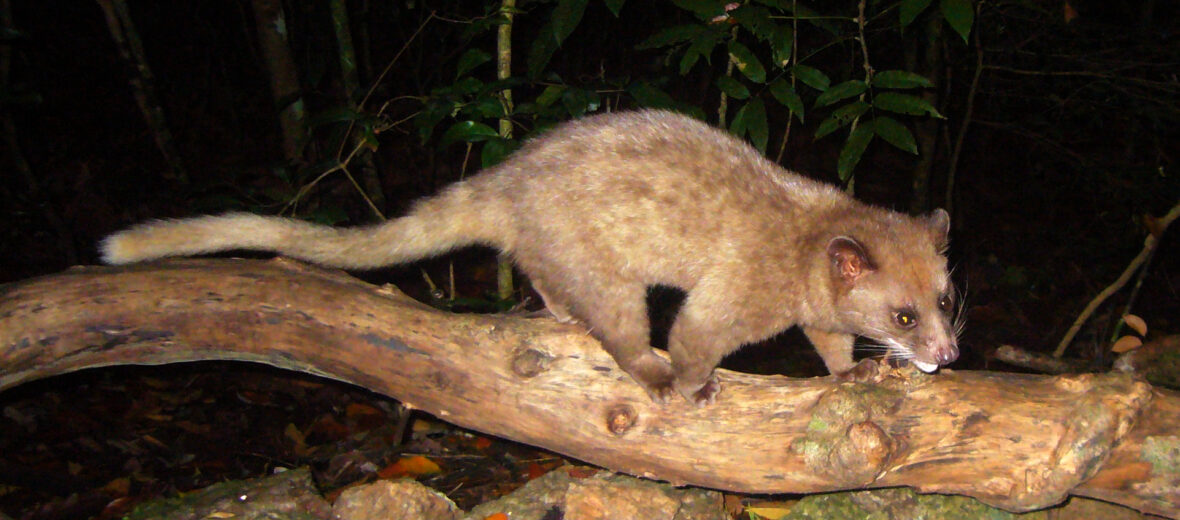
The golden palm civet hails only from Sri Lanka. They prefer montane evergreen forests, lowland rainforests, and thick monsoon forests. Even though they face the threats of habitat loss and destruction at the hands of farming, ranching, roads (which result in habitat division & vehicle strike – being hit by vehicles), and the logging industry (which is a major cause of deforestation); hunting; and trapping for its meat (which is considered a delicacy), these critters are still listed as Least Concern by the IUCN, as of 2015.
First the Stats…
Scientific name: Paradoxurus zeylonensis
Weight: Up to 6.2 lbs.
Length: Up to 35.43 inches, from snout to tail tip
Lifespan: Up to 9 years
Now on to the Facts!
1.) These civets were first described by Peter Simon Pallas in 1778.
2.) Golden palm civets also go by other names like sapumal kalawaddha සපුමල් කලවැද්දා, hotambuwa හොතබුවා, ranhothambuwa රන් හොතබුවා, and pani uguduwa පැනි උගුඩුවා by the Sinhala speaking people.
3.) Asian civets and golden palm civets are both referred to as maranai மரநாய், in the Tamil language, and kalawedda in the Sinhala language.
4.) There are 2 known color morphs of the golden palm civets: dark brown and golden.
5.) They produce a spruprisingly nice aroma from their anal glands that smells of Michelia champaca flowers.
But wait, there’s more on the golden palm civet!
6.) The golden palm civet is nocturnal (active at night).
7.) These critters are solitary and only come together to mate.
Did you know…?
Even though it’s mistakenly labelled as the golden palm cat, the golden palm civet is shown on the 3-rupee Sri Lankan postal stamp.
8.) They are arboreal (spend most or all of their lives in trees).
9.) Mice, smaller and juvenile rats, invertebrates, berries, and fruits are all on the menu.
10.) Females undergo up to an 85 day gestation (pregnancy) that yields up to 3 pups.
But wait, there’s still more on the golden palm civet!
11.) Pups are weaned in up to 175 days.
12.) The pups are sexually mature in 1 – 2 years.
13.) Communication and territories are denoted using scenting from their anal glands, urine, and feces (poop).
14.) Leopards, wild dogs, snakes, and crocodiles all prey on these and other civets.
Now a Short Golden Palm Civet Video!
Be sure to share & comment below! Also, check out the Critter Science YouTube channel. Videos added regularly!
Want to suggest a critter for me to write about? Let me know here.
Some source material acquired from: Wikipedia & IUCN
Photo credit: iNaturalist UK



